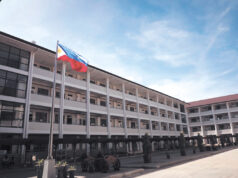A construction boom and a thriving cement industry
Construction activities in the Philippines are swelling. According to the Philippine Statistics Authority (PSA), the total number of constructions in the second quarter of 2018 was 40,182, up 11.7% from the 35,983 constructions recorded in the same period in 2017.
From April to June, the agency recorded 29,060 residential constructions, 5,644 non-residential constructions, 1,511 additions to existing structures, and 3,697 alterations and repairs made to existing structures.
The top five regions in terms of number of constructions were CALABARZON (9,608 constructions or 23.9% of the total), Central Luzon (5,028 or 12.5%), Central Visayas (4,555 or 11.3%), Ilocos Region (3,123 or 7.8%) and the National Capital Region (3,043 or 7.6%).
The growth in constructions has been taking place alongside an increasing number of infrastructure projects being undertaken by the administration of President Rodrigo R. Duterte under its “Build, Build, Build” program. Early this year, Gil S. Beltran, Undersecretary of the Department of Finance, was quoted in news reports as saying that about 60 infrastructure projects were then under construction and pre-construction.
The construction boom has been a boon to the industry that supplies one of the most basic construction materials — cement. In a report, Oxford Business Group noted that cement sales reached 24.4 million tons in 2015, citing data from the Cement Manufacturers’ Association of the Philippines. The following year, sales climbed to 26 million tons. (In mid-2017, the association announced that it would no longer collect sales data for the cement industry.)
It’s worth noting that the price of cement hasn’t always gone up despite increasing demand for it. PSA reported that cement index in the National Capital Region in January of this year was down 3.4% from the same period in 2017. But the situation is beginning to change. Latest data from the agency shows that in August of this year, cement index grew 1.5% compared with the same period last year.
Cement manufacturers are busy building up their capacities. Eagle Cement Corp. (ECC) has recently opened its third cement facility in San Ildefonso, Bulacan, which will raise by two million metric tons (MT) its current capacity of 5.1 million MT per year.
“We’re expecting some volume growth compared to previous year’s second half… impact financially will be second half,” ECC President and Chief Executive Officer John Paul L. Ang was quoted as saying in a June BusinessWorld report.
The company’s fourth cement line, in Malabuyoc, Cebu, is already in the works. This plant, which will have a capacity of two million MT, is slated for completion in 2020.
Holcim Philippines is pushing forward with the upgrades of its facilities in Luzon, with a view to better support construction activity in the island. In a recent press release, the company said it is installing new equipment and storage facilities to increase the annual cement production capacity of its La Union plant to 1.8 million tons next year from the current one million tons. At the same time, it is implementing efficiency initiatives in its facilities in Bulacan, Batangas and Manila to ensure better cement supply for the whole of Luzon.
“Holcim Philippines remains committed to the development of Luzon and the entire country and we intend to continue being so for many decades more. These expansion and efficiency initiatives help ensure a reliable supply of high-quality cement that enable our partners to build better with certainty the many ongoing and upcoming construction projects in the region,” said John Stull, president and chief executive officer of Holcim Philippines.
These initiatives are also part of the company’s plan to raise its nationwide cement production to 12 million MT from the current 10 million MT.
The bottom lines of these two cement manufacturers have been boosted by the construction boom. Holcim Philippines’ net sales grew 18.5% to P10.1 billion in the second quarter of 2018 from P8.6 billion in the same quarter last year, even though cement prices were low. “Our Q2 performance showed encouraging trends which translated into significant sales growth on the back of strong building activity,” Mr. Stull said in a statement.
But he noted that their second-quarter business performance continued to be affected by factors like rising fuel costs, the depreciation of peso against the U.S. dollar and tighter competition. “Still, there are many opportunities for our business given the robust building activity throughout the country, and this is seen in our substantial sales growth in the second quarter,” he said.
Holcim Philippines posted revenues of P18.8 billion in the first half of 2018, up 8% from the same period last year.
ECC reported a net profit growth of 5% to P2.3 billion for the first six months of the year as a result of robust sales and efficient operations. Its net sales climbed 10% to P8.2 billion during the same period.
“We remain confident that we will be able to sustain growth towards the end of the year, with the improving construction activity of the private sector and expected roll out of government infrastructure projects,” Mr. Ang said in a statement.



